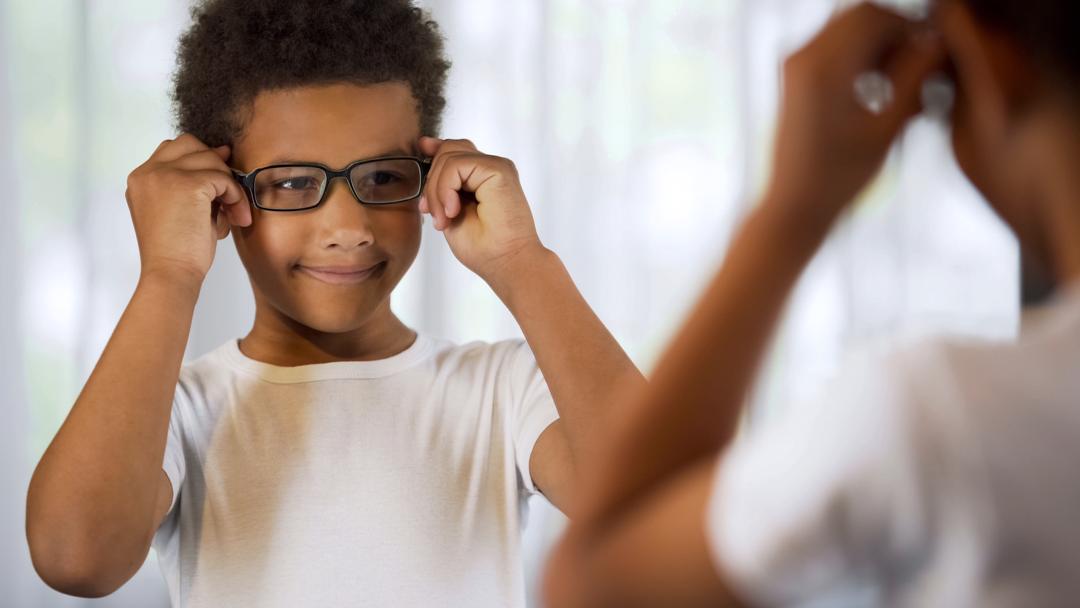Most people wear glases because they have a refractive error.
According to the WHO, it is estimated that 153 million people worldwide live with visual impairment due to uncorrected refractive errors. Pretty much, right? Let’s look at what refractive error is, the different types and how it can be managed.
For clear and sharp images to be seen, light rays coming from objects in view should be focused on the retina.

When the light rays are not properly focused on the retina (i.e. the image is formed either in front, behind or is distorted), the image seem is blurry. When this occurs, it is referred to as refractive error
Types of Refractive Errors
There are 4 main types of refractive errors.
1. Myopia
2. Hyperopia
3. Astigmatism
4. Presbyopia
1. Myopia: This is commonly referred to as short sightedness. In eyes with myopia, the image is formed in front of the retina. This occurs either because the eyeball is too long, or the cornea (the transparent outer part of the eye) is too curved. People with myopia usually complain of difficulty seeing objects at far, headaches, eyestrain, difficulty reading from the board in school or moving close to the TV to see. Myopia can be managed using concave (minus) lenses.

2. Hyperopia or longsightedness as it is commonly called occurs when the images are formed behind the retina which causes blurry vision. This occurs either because the eyeball is too short, or the cornea is not sufficiently curved (flatly curved). Hyperopic patients usually complain of headaches especially after doing close tasks, blurry vision, eyestrain, difficulty focusing on close objects, in some patients even objects at a far distance might be blurry. Hyperopia is managed with convex (plus) lenses which help bring the images to focus on the retina.

3. Astigmatism occurs when the cornea/lens which is meant to be perfectly smooth or curved is not perfectly curved or smooth. Due to the irregularity of the cornea/lens surface, light rays do not focus on a single point on the retina, rather, it forms multiple points of focus, and this results in blurry vision sometimes at both near and far distances. People with astigmatism may experience blurry vision at far and near distances, eye strain, headache, tilting of head or squinting to see clearly. It is corrected using cylindrical or spherocylindrical lenses.

4. Presbyopia is an age-related condition that affects people usually from age 40 and above. Others might experience it earlier (in their late 30s). As we age, the lens gradually begins to lose the ability to see things that are close clearly. This occurs because the lens becomes more rigid and it becomes difficult to change its shape. People with presbyopia may begin to notice difficulty reading tiny prints or threading a needle and other close tasks, holding materials at arm’s length farther from your face, require more light while reading, eye strain, headaches from doing close work. Presbyopia can be managed using plus lenses which can either be in form of just reading glasses, bifocals or progressive lenses.
Symptoms of refractive error
Common symptoms of refractive error include:
- Blurry vision
- Headache
- Eye strain
- Difficulty seeing at certain distances either far or near
- Double vision
- Squinting
Diagnosis and management of refractive errors
Refractive errors can be diagnosed during a comprehensive eye examination by an eye care professional or during a visual screening. Early detection and diagnosis of refractive errors is important so as to prevent amblyopia (lazy eye, a condition in which even glasses will not help the child to see optimally) and eventually visual impairment.
Refractive errors cannot be prevented but can be managed with the use of
v Spectacles
v Contact lenses
v Refractive surgery.
In the concluding part, we will discuss the various myths surrounding the use of spectacles or eye glasses.

